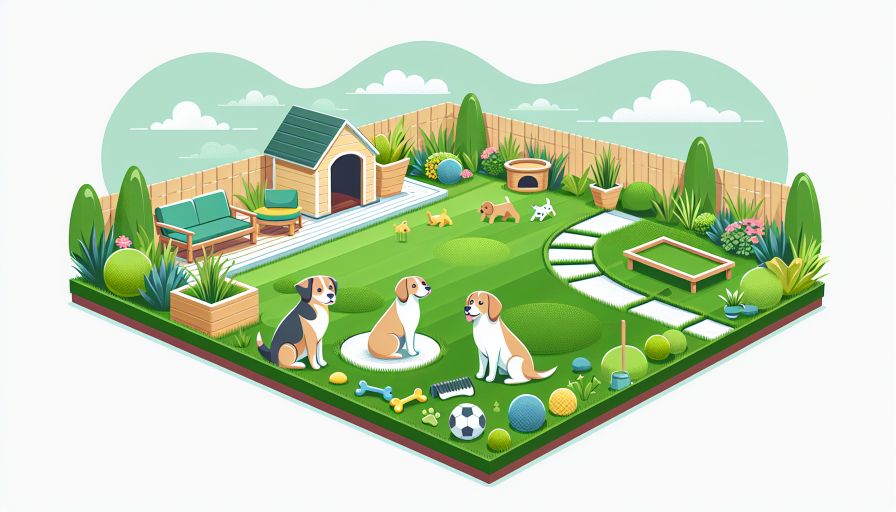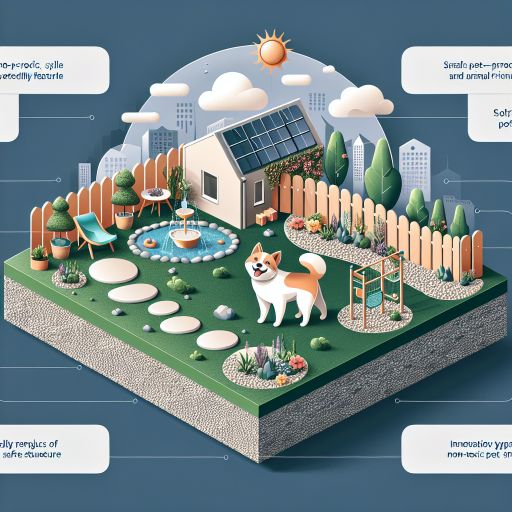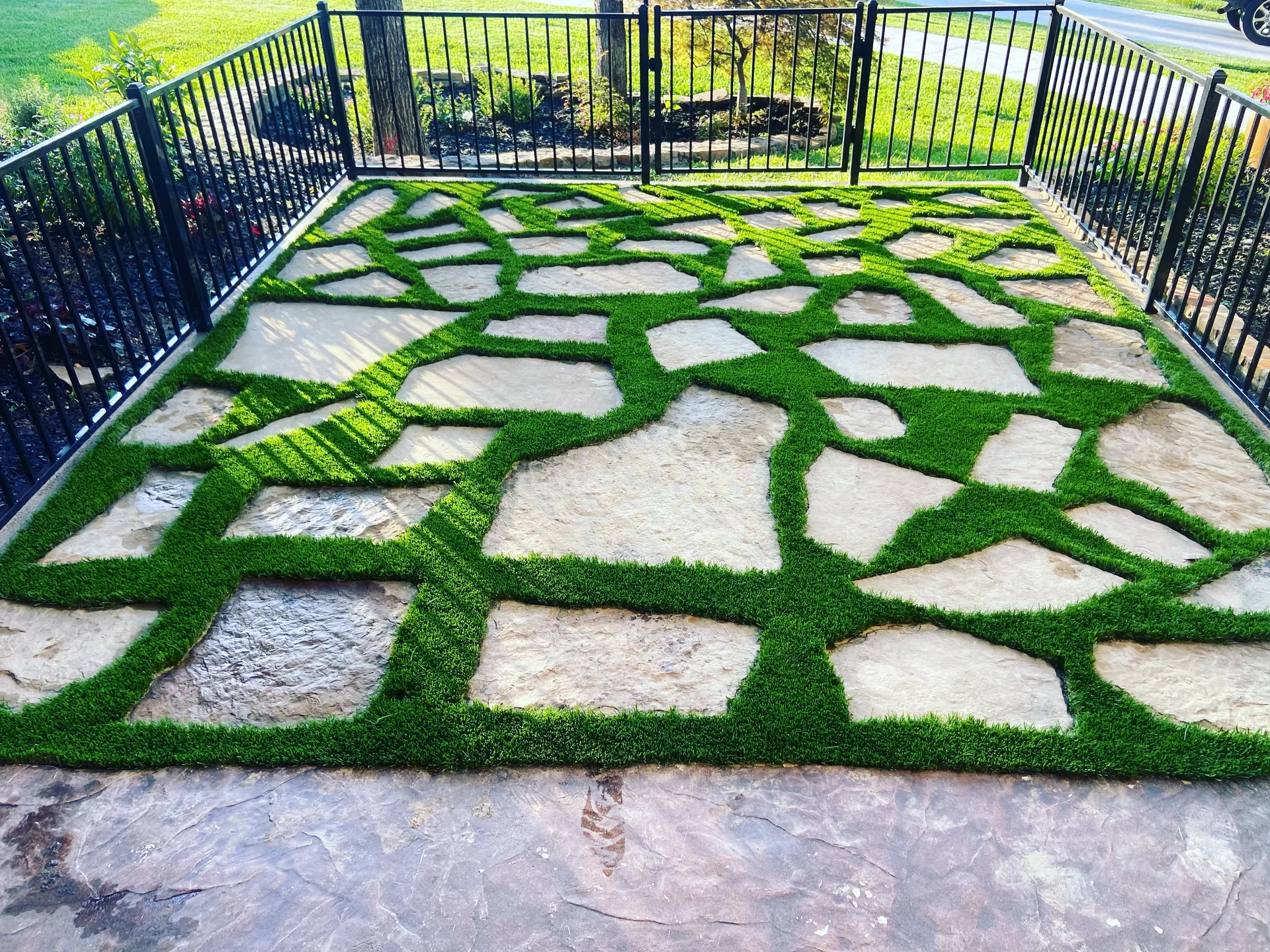
- Introduction to Pet-Friendly Landscaping
- Benefits of Artificial Grass for Dog Owners
- Environmental Impact and Sustainability of Artificial Grass
- Installation and Maintenance Tips for Artificial Grass
- Health and Safety Considerations for Pets
- Real-World Adoption and Future Trends in Pet-Friendly Landscaping
Introduction to Pet-Friendly Landscaping
In recent years, pet owners have increasingly turned to innovative solutions to create pet-friendly landscapes that accommodate their furry friends’ needs while maintaining aesthetic appeal. One of the standout trends in this domain is the adoption of artificial grass, a versatile and practical option for dog owners looking to enhance their outdoor spaces. Companies like Prime Design Turf have been at the forefront of this movement, offering specialized synthetic turf solutions tailored to a wide array of applications.
At Prime Design Turf, the approach to pet-friendly landscaping begins with an understanding of the unique challenges that dog owners face. Traditional grass can suffer from wear and tear, discoloration, and even damage due to pet activities. Moreover, natural grass often requires the use of pesticides and fertilizers, which can pose a risk to pets. In contrast, incorporating synthetic turf can mitigate these issues, providing a safe, durable, and visually appealing environment.
With over 20 years of experience, Prime Design Turf has perfected the balance between creative design and meticulous installation, ensuring that every project meets the highest standards of quality. Their commitment to personal service is evident in how they address both the aesthetic and practical needs of their clients. This dedication is particularly important when it comes to creating pet-friendly landscapes, where every detail, from turf quality to installation, matters.
Here are a few key features of Prime Design Turf’s synthetic grass solutions that make them ideal for dog owners:
- Durability: Designed to withstand high traffic and resist common pet-related damages.
- Low Maintenance: Requires minimal upkeep compared to natural grass, reducing the need for pesticides and fertilizers.
- Toxic-Free: Ensures the safety of pets by avoiding harmful chemicals.
- Drainage: Efficiently handles pet waste, promoting cleanliness and hygiene.
To illustrate the growing adoption of artificial grass solutions, Prime Design Turf’s portfolio includes a wide variety of projects, from residential gardens to commercial parks and playgrounds. The company’s extensive experience allows them to deliver solutions that are both cost-effective and tailored to the specific needs of their clients.
Below is a table summarizing some of the features and benefits of artificial grass solutions provided by Prime Design Turf:
| Feature | Benefit |
|---|---|
| Durability | Long-lasting and resistant to wear and tear |
| Low Maintenance | Reduces need for chemical treatments and regular mowing |
| Toxic-Free | Safe for pets and children alike |
| Efficient Drainage | Keeps the area clean and hygienic |
As more dog owners seek practical landscaping solutions, the rise of artificial grass presents a compelling option. With the expertise of companies like Prime Design Turf, transforming outdoor spaces into pet-friendly environments has never been more achievable or beneficial.
Benefits of Artificial Grass for Dog Owners
Artificial grass offers numerous benefits for dog owners seeking a functional and attractive outdoor space. One key advantage is its durability. Unlike natural grass, artificial turf can withstand high-traffic activities and the wear and tear from energetic pets. This resilience limits the need for regular repairs and reseeding, making it a low-maintenance option.
Another significant benefit is the ease of cleaning. Artificial grass is designed with a permeable backing that allows liquid to drain through, reducing the risk of puddles and muddy areas. Solid waste can be easily removed, and the area can be rinsed with water to maintain cleanliness and hygiene. This makes it a practical choice for dogs, particularly in reducing odors and maintaining a pleasant environment.
Artificial turf also provides a safe and comfortable surface for pets to play on. Modern products often feature non-toxic materials that do not cause harm to animals. Moreover, many types come with anti-microbial properties, reducing the presence of bacteria and allergens that could pose health risks.
In terms of aesthetics, artificial grass maintains a lush, green appearance year-round, regardless of weather conditions. This can create a more visually appealing landscape compared to natural grass, which may brown or die off in extreme temperatures. For dog owners, this consistent visual appeal complements the functional benefits of an easy-to-clean, resilient surface.
Further, artificial grass virtually eliminates common lawn problems such as digging and bare patches. As dogs often dig in natural grass, leading to unsightly holes and uneven surfaces, artificial grass can mitigate such issues. It provides a sturdy surface that deters digging behavior, thus preserving the landscape’s integrity.
The cost-effectiveness of artificial grass is another considerable benefit. While the initial investment may be higher than planting natural grass, the long-term savings are evident. Reduced expenses in watering, mowing, fertilizing, and other lawn maintenance tasks can lead to significant financial savings over time.
In summary, artificial grass solutions provide dog owners with a robust, easy-to-maintain, and attractive alternative to natural grass. Its durability, ease of cleaning, safety, aesthetic appeal, and cost-effectiveness make it a compelling choice for creating a pet-friendly landscape.
Environmental Impact and Sustainability of Artificial Grass
One of the significant considerations in the rise of artificial grass solutions is its environmental impact and sustainability. While artificial turf offers practical benefits for dog owners, it is crucial to examine its ecological footprint to make informed decisions.
Resource Use in Production
The production of artificial grass involves the use of various synthetic materials such as polyethylene, polypropylene, and nylon. The energy consumption and carbon emissions associated with manufacturing these materials can be substantial. Additionally, the production process requires petrochemical resources, contributing to the environmental footprint.
Water Usage
One of the frequently cited benefits of artificial grass is its water conservation. Traditional lawns typically require extensive watering, especially in arid regions. Switching to artificial turf can result in significant water savings. For instance, the Southwest Research Institute found that artificial turf can reduce a household’s water consumption by thousands of gallons annually.
Longevity and Waste
Artificial grass is designed to be durable, often lasting between 15 to 25 years with proper maintenance. This longevity means fewer replacements compared to natural lawns. However, disposal at the end of its life can pose environmental challenges. Much of the synthetic turf currently used is not biodegradable, leading to waste management issues. Advances in recycling technologies are underway, but widespread, efficient recycling systems are not yet in place.
Carbon Emissions
While artificial grass eliminates the need for gas-powered lawn maintenance equipment like mowers, its production and transportation still result in carbon emissions. A study from the University of California, Berkeley, suggests that while artificial turf offers some emissions savings over its lifespan, the production and end-of-life phases still contribute to greenhouse gas emissions.
Impact on Biodiversity
Natural lawns support various forms of life, from insects to microorganisms in the soil. Replacing these with artificial grass can disrupt local ecosystems. Although some modern artificial turf systems are designed to be more permeable and ecological, they still do not fully replicate the rich biodiversity supported by natural grass.
Heat Retention
Artificial grass tends to retain more heat than natural grass, sometimes becoming significantly hotter in direct sunlight. This heat can affect the surrounding environment, increasing the urban heat island effect. However, innovations in cooling technologies and materials in recent years aim to mitigate this issue.
In summary, while artificial grass provides several environmental benefits such as water conservation and reduced emissions from lawn maintenance, there are also notable concerns regarding resource use, waste management, and impact on local biodiversity. Ongoing advancements and innovations in the industry are crucial for improving its sustainability profile.
Installation and Maintenance Tips for Artificial Grass
When installing artificial grass for pet-friendly landscaping, proper preparation and maintenance are crucial for ensuring durability and functionality. Here are some essential tips for both installation and ongoing upkeep:
Installation Tips:
- Site Preparation: Begin by clearing the area of any existing grass, rocks, and debris. Properly level the surface and ensure good drainage to prevent water accumulation beneath the artificial grass.
- Base Layer: A sub-base, typically composed of crushed stone or gravel, should be laid to provide a stable foundation. This layer should be compacted to ensure it is firm and level.
- Weed Barrier: Install a weed barrier to prevent weed growth through the artificial turf. This layer helps to maintain a clean and low-maintenance lawn.
- Install Turf: Roll out the artificial grass over the prepared substrate. Ensure that the grass blades are facing the same direction for a uniform look. Trim excess turf and secure the edges with landscaping nails or adhesive.
- Infill Material: Brush the grass blades upright and spread infill material, such as silica sand or crumb rubber, evenly across the surface. Infill helps support the grass blades and improves drainage.
- Seam and Secure: Join multiple rolls of turf using adhesive or seaming tape. Secure the edges along borders with nails or landscaping staples recommended by the manufacturer.
Maintenance Tips:
- Regular Cleaning: Artificial grass should be rinsed regularly to remove dirt, dust, and pet urine. Use a mild detergent solution for deeper cleaning to eliminate any lingering odors.
- Debris Removal: Remove leaves, twigs, and other debris using a leaf blower or a gentle brush. This prevents organic material from accumulating and causing potential issues.
- Brushing: Periodically brush the grass against the grain to keep the blades standing upright and prevent matting. This helps to maintain the appearance and functionality of the turf.
- Addressing Stains: Promptly clean up spills, pet waste, or other stains to prevent discoloration. Use appropriate cleaners as recommended by the turf manufacturer.
- Replenishing Infill: Inspect the infill levels regularly and replenish as necessary to maintain support for the grass blades and to ensure proper drainage.
- Inspect and Repair: Periodically inspect the turf for damage or wear. Repair any torn or damaged sections promptly to extend the lifespan of the artificial grass.
By following these installation and maintenance guidelines, dog owners can create a durable, pet-friendly landscape that remains aesthetically pleasing and functional over time. Proper care and regular upkeep of artificial grass ensure that it continues to meet the needs of both pets and their owners.
Health and Safety Considerations for Pets
When considering the adoption of artificial grass for pet-friendly landscaping, it is crucial to examine the health and safety aspects for pets, especially dogs, who are the primary users of these outdoor spaces.
Allergen Reduction
One significant health benefit of artificial grass is the reduction of allergens. Traditional grass can harbor pollen and other allergens that can trigger reactions in pets. Studies indicate that artificial grass minimizes this risk, providing a hypoallergenic environment for dogs that may suffer from seasonal allergies.
Cleanliness and Hygiene
Artificial grass is designed to minimize the accumulation of dirt, dust, and mud, which reduces potential contamination risks. This makes it easier to clean and maintain, contributing to a more hygienic environment for pets. Pet waste can be easily removed, and the grass can be hosed down without risk of creating muddy patches.
Toxicity and Chemical Safety
Potential toxicity is a concern that dog owners must address. High-quality artificial grass products are made from non-toxic materials which means they do not pose a risk when dogs chew on or lick the grass. It is crucial to choose products that are free from heavy metals and harmful chemicals such as lead and phthalates.
Heat Retention
One of the primary concerns with artificial grass is its tendency to retain heat compared to natural grass. Higher temperatures can make the surface uncomfortable or even unsafe for pets to walk on. However, advanced products now incorporate cooling technologies to mitigate heat absorption. It is also advisable for pet owners to provide shaded areas and lots of water during hotter months to ensure their pets’ comfort.
Durability and Physical Safety
Durability is a major advantage of artificial grass. It provides a consistent and even playing surface without the dips and holes that can cause injuries. High-quality turf is designed to withstand digging and vigorous activity, thereby reducing the chance of pets getting hurt. Additionally, proper installation ensures that the edges are secured, preventing accidental tripping or lifting of the turf.
Potential for Infections
There is also a concern regarding bacterial and fungal infections. Good drainage systems built into most artificial grass products help avoid standing water, which can become a breeding ground for bacteria and fungi. Routine cleaning with mild disinfectants can further ensure that the surface remains sanitary.
In summary, while artificial grass offers several health and safety benefits for pets, it is crucial for dog owners to invest in high-quality products and follow proper maintenance protocols to maximize these advantages. Practical considerations like ensuring sufficient shade and regular cleaning will help provide a safe, enjoyable, and healthful environment for their pets.
Real-World Adoption and Future Trends in Pet-Friendly Landscaping
Artificial grass has gained traction among dog owners, leading to significant changes in pet-friendly landscaping practices. The adoption of artificial grass is not a passing trend but a growing movement evidenced by increasing installations in urban and suburban settings.
Increasing Popularity
According to the Synthetic Turf Council, the demand for artificial grass for residential applications, particularly for pet areas, has seen a steady annual growth. In 2020, the North American market alone was estimated to be worth over $2.5 billion. This figure highlights the broad acceptance and growing reliance on artificial grass among property owners, including those with pets.
Case Study: Urban Environments
Urban areas present a particular challenge for maintaining natural grass lawns, making artificial grass a practical alternative. Cities like Los Angeles and Miami have seen a rise in the adoption of synthetic turf in dog parks and residential areas. For instance, the City of Los Angeles reported a 50% increase in the installation of artificial grass in public spaces from 2015 to 2020, a trend that correlates with the rising number of pet owners seeking durable and low-maintenance landscaping solutions.
Community and Policy Support
Communities and policymakers are beginning to support the use of artificial grass in landscaping projects. Some municipalities offer incentives or rebates for installing artificial turf due to its water-saving benefits. The Metropolitan Water District of Southern California, for instance, provided rebates reaching up to $3 per square foot for turf replacement programs, which many dog owners have taken advantage of.
Future Trends
The future of pet-friendly landscaping is moving towards smarter, more integrated solutions. Innovations in artificial grass technology are aimed at improving its durability, aesthetic appeal, and environmental impact. Products are being developed with advanced drainage systems, antimicrobial properties, and recyclable materials, indicating a trend towards more sustainable and pet-friendly innovations.
- Improved Durability: Ongoing enhancements are focused on making synthetic turf more resistant to wear and tear from pets.
- Drainage Systems: Advanced designs that facilitate more efficient drainage, reducing the likelihood of water pooling and odors.
- Antimicrobial Properties: Development of grass fibers treated with antimicrobial agents to keep the turf hygienic and safe for pets.
- Recyclability: Increasing efforts to make artificial grass products fully recyclable at the end of their life cycle.
As technology continues to evolve, the landscape of pet-friendly solutions is expected to diversify further, catering to the specific needs of dog owners while promoting sustainability and ease of maintenance.


